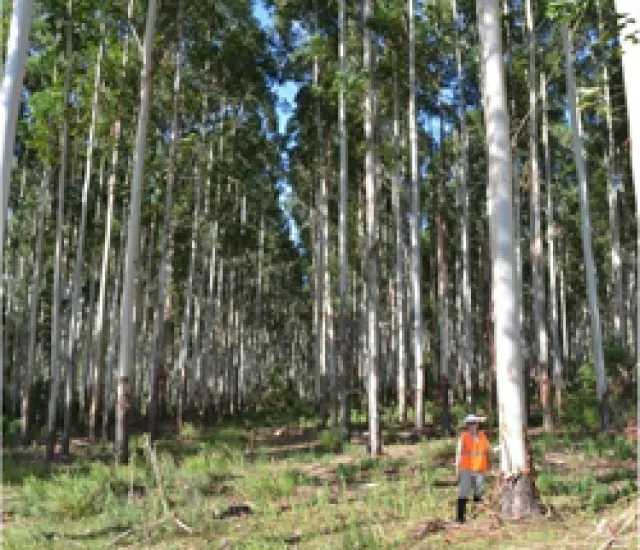Back in the summer of 2009, James Treanor was holding off on making his first foray into timberland investing. As a senior investment officer at the Florida State Board of Administration, Treanor is charged with finding diversifying asset classes to fill out the 8 percent of the Florida Retirement System’s $125.4 billion portfolio that is split evenly between private equity and strategic investments. “We felt there wasn’t any rush,” he told Institutional Investor in June 2009. “Given where the cycle is, prices should come down on timber.” Timberland prices climbed in the run-up to the 2008 credit crisis when investors began using debt capital — as high as 60 percent leverage — in place of equity. These inflated values collapsed with the housing and construction markets, says James Webb Jr., director of business development at RMK Timberland Group, a timber investment management organization, or TIMO, in Winston-Salem, North Carolina. Now that prices have returned to earth, traditional pension fund buyers are back in the game.
Treanor’s patience has paid off. The Florida State Board, which oversees the FRS and 25 other state funds from its Tallahassee office, is about to divide a $400 million timberland allocation between two TIMOs: $300 million to Boston’s Hancock Timber Resource Group and $100 million to Jackson, Mississippi–based Molpus Woodlands Group. Meantime, the Iowa Public Employees’ Retirement System is searching for its first timber manager, while Massachusetts’ Pension Reserves Investment Management Board wants to augment its $1.03 billion timber portfolio.
Public pension funds are the top investors in timberland, holding 45 percent, or $19 billion, of the asset class, according to a 2010 survey of 23 TIMOs by Atlanta consulting firm TimberLink. Foundations and endowments like Yale University, which owns 3 million acres of timber, hold 19 percent, or $8 billion. Corporate pension plans such as Eastman Chemical Co. and Target Corp., both longtime timber investors, make up 10 percent, or $4 billion, of the total.
A versatile asset class, the earth’s forests can fill multiple roles. They are a green and renewable resource with a high positive correlation to inflation, preserving capital when prices rise. And although excessive leverage disturbed timberland values of late, trees grow in size and value regardless of movements in the financial markets.
The California Public Employees’ Retirement System, a timberland investor since 1989, recently gave forests a bigger role. Last December, Sacramento-based CalPERS moved its $2.4 billion in timber holdings — 1.03 percent of its $230 billion in assets — from the inflation-linked to the real assets portfolio. The logic: An inflation hedge, timberland also delivers equity diversification and cash inflow.
With its low correlation to most other asset classes, timberland performed as the TIMOs promised in 2008 and 2009, offering downside protection. Timberland investments managed by 11 U.S. TIMOs representing $23.7 billion in assets, tracked by the National Council of Real Estate Investment Fiduciaries timberland index, rose 9.52 percent in 2008 and fell only 4.75 percent in 2009. The index lost 0.15 percent last year, when many asset classes were back in positive territory, but it gained an average of 6.82 percent a year in the decade through 2010. CalPERS’s forests had an even better 20-year run, earning 8.90 percent annually net of fees.
Investors like Ralph Egizi, CIO of Eastman Chemical, are keen on timberland’s increasingly global reach. The $1.1 billion Kingsport, Tennessee–based pension fund invests in farmed holdings in Brazil, Chile and Uruguay. “That part of the world has wonderful conditions for growing timber,” says Egizi, who believes timberland is a good diversifier, with a consistent cash flow during harvest.
Egizi warns that investors need to make steady commitments to timber to avoid market gyrations. His manager Peter Mertz, CEO of Global Forest Partners, a TIMO in Lebanon, New Hampshire, agrees: “Prices go up and down during the holding period. There’s no getting away from that.”






